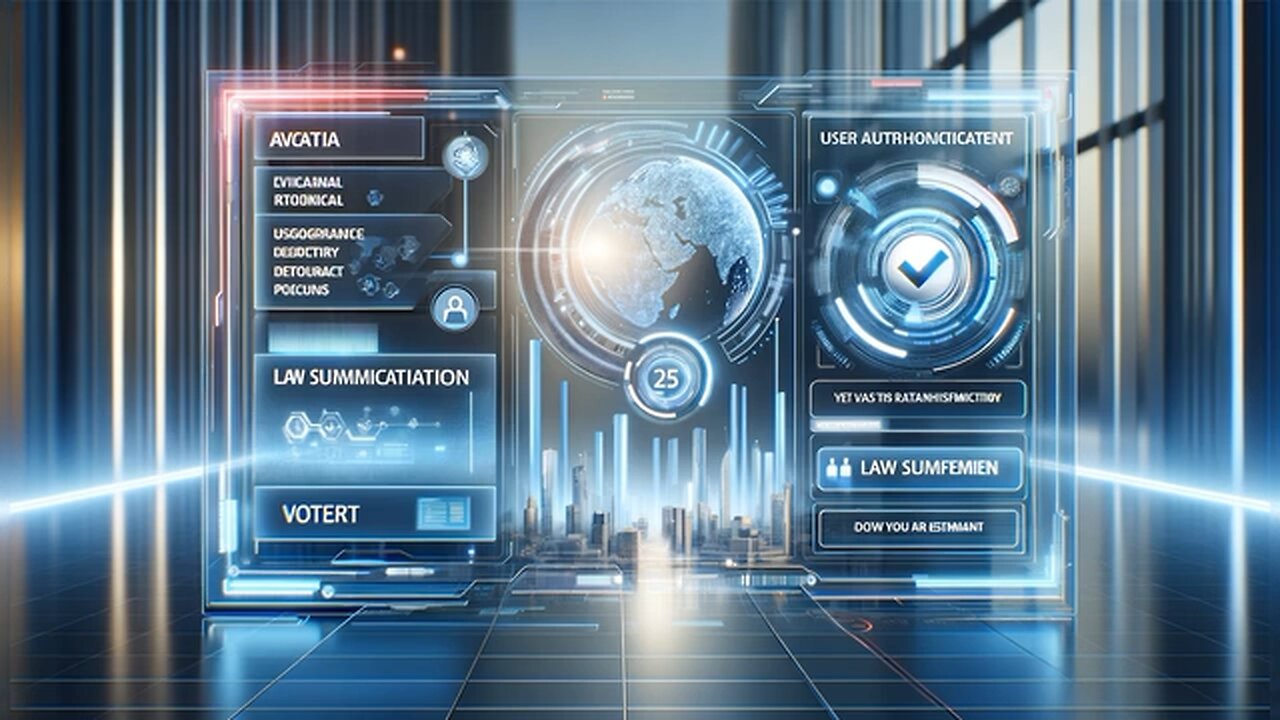Premium Only Content

Here is a refined and comprehensive compilation of bullet statements detailing every aspect of the Citizens Ratification Branch (CRB) and the Citizens Ratification Amendment (CRA):
Citizens Ratification Branch (CRB) Overview
Structured Ratification Process: Specifies a structured process for ratifying laws, ensuring continuous citizen engagement.
Monthly Ratification: Conducts votes on the first day of each month to facilitate ongoing citizen participation.
Ratification and Unratification Criteria:
Immediate Removal for New Laws: Unratified new laws are removed from the legal framework immediately.
Gradual Removal for Existing Laws: Informs citizens via the CRB portal and removes laws after sustained unratification over three months.
Legislative Responsiveness: Repromulgation of unratified laws is allowed, potentially with modifications.
Certification by Officials: Ratification results are certified by CRB officials under oath.
Forensic Auditing: Monthly audits by private companies ensure adherence to procedures.
Technological Support: Utilizes advanced technology to enhance secure and efficient citizen participation.
Innovation in Governance: Aims to revolutionize governance by making it more accessible and responsive, akin to innovations by Elon Musk.
Direct Citizen Engagement: Allows direct citizen input in legislative processes with full transparency.
Responsive to Public Opinion: Modifies laws based on citizen feedback, akin to iterative product development.
Future-Ready Governance: Ensures the legislative framework is adaptable to emerging societal needs.
Citizens Ratification Amendment (CRA) Framework
Amendment History and Process:
The U.S. Constitution has been amended 27 times, reflecting a rigorous amendment process.
Amendments can be initiated by Congress or a State Convention.
CRA Strategy:
Preferred Path: Seeks amendment through a congressional joint resolution.
Probable Path: More likely to proceed via a convention called by state legislatures.
Dual Approach: Pursues both paths simultaneously, engaging community support.
Specific Amendment Provisions (28th Amendment):
Establishes the CRB with full ratification powers and details the unratification process.
Ensures CRB operations are independent, with a focus solely on ratification.
Stipulates that funding includes $100 per citizen vote and interest-free loans from Congress.
Requires transparent reporting and auditing of ratification outcomes.
Specifies that CRB leadership includes a Director appointed by the President.
Technological and Organizational Enhancements
Universal Accessibility: Proposes a user interface accessible on various devices, ensuring inclusivity.
Partnerships for Advancement: Collaborates with universities on AI and quantum computing.
Democratic Oversight: Positions the CRA as a mechanism for democratic oversight without changing the governmental structure.
Governance and Operational Funding: Outlines a non-profit governance structure with specific administrative roles and funding guidelines.
These statements provide a detailed view of the operational, strategic, and technological dimensions of the CRB and CRA, underscoring their commitment to enhancing democratic engagement and governance transparency.
-
 2:14:54
2:14:54
TheSaltyCracker
4 hours agoTrump Goes Gangster ReeEEeE Stream 01-26-25
100K218 -
 4:42:13
4:42:13
Due Dissidence
13 hours agoTrump Calls To "CLEAN OUT" Gaza, Swiss ARREST Pro-Palestine Journalist, MAGA's Hollywood Makeover?
43.7K58 -
 2:02:20
2:02:20
Nerdrotic
6 hours ago $15.13 earnedDECLASSIFIED: JFK, MLK UFO Immaculate Constellation Doc | Forbidden Frontier #089
67.6K11 -
 3:00:14
3:00:14
vivafrei
14 hours agoEp. 248: "Bitcoin Jesus" Begs Trump! Rekieta Gets Plea Deal! Pardons, Deportations, Bird Flu & MORE!
145K166 -
 3:44:06
3:44:06
Rising Rhino
12 hours ago $12.35 earnedWashington Commanders Vs Philadelphia Eagles: NFL NFC Championship LIVE Watch Party
66.2K4 -
 13:00
13:00
Exploring With Nug
7 hours ago $5.24 earnedHe Went To Get A Haircut And Vanished WIthout a Trace!
52.4K2 -
 18:53
18:53
DeVory Darkins
2 days ago $29.42 earnedTrump JUST ENDED Mayor Karen Bass During HEATED Meeting
85.5K217 -
 21:06
21:06
Russell Brand
11 hours agoIT'S COMING
142K481 -
 21:26
21:26
Stephen Gardner
1 day ago🔥What JUST leaked out of Congress must be STOPPED NOW!
137K282 -
 53:25
53:25
tether
11 days agoStability and Freedom in Chaos: The Story of Tether USD₮ | Tether Documentary (USDT)
147K5